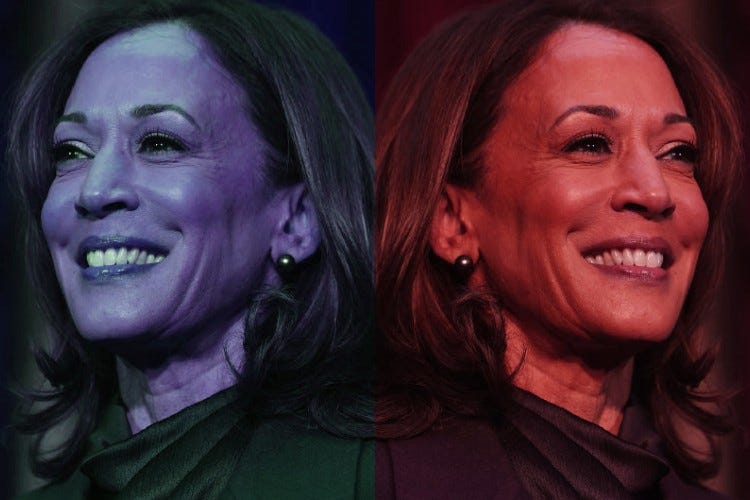Did Harris Lose Because She Ran to the Center, or Because She Didn't Run to the Center ENOUGH?
What do the numbers say?

The battle over Democrats’ future direction is becoming one of the more protracted nerd fights in recent memory. There are sharp disagreements — should Democrats move to the left or to the center? Should they focus on cultural or economic issues? Should they meet voters where they are, or shame people as wicked until they vote Democrat in a desperate bid for absolution? People disagree.
But there’s one point of agreement: Everyone agrees that the Harris campaign ran to the center. Harris successfully ran for President of Twitter in 2019 while going full Hindenberg in the actual election, and her main message in 2024 was “haha whoops that was just a phase.” Her loss raises the question: Was the problem that she ran to the center, or that she started out too far left?
The answer to that question matters. Some Democrats think that the path to winning involves embracing common sense, while others believe that we’re living in the charred ruins of the neoliberal order, and that Americans are begging a brave, leftist vanguard to pull us from the wreckage. And that completely biased characterization does tip my hand, so let me not be coy: I think Democrats who look at the last election and think that the problem was that we weren’t far left enough need to have their heads examined. But who cares what I think? The only thing that should matter here is evidence. So let’s look at what evidence exists and see if we can determine whether the problem was Harris’ initial left-leaning posture or her eventual centrist campaign.
Harris did better in states where she campaigned
Everyone knew from the beginning: Only a few states would matter. Pennsylvania, Wisconsin, Michigan, Georgia, North Carolina, Arizona, and Nevada got all the attention, while other states could fuck straight off. In fact, if the message “Kamala Harris thinks Idaho (or any non-battleground state) can fuck straight off” would have gained her any advantage whatsoever in Pennsylvania, then ads with that message would have run around the clock in Philadelphia and Pittsburgh.




